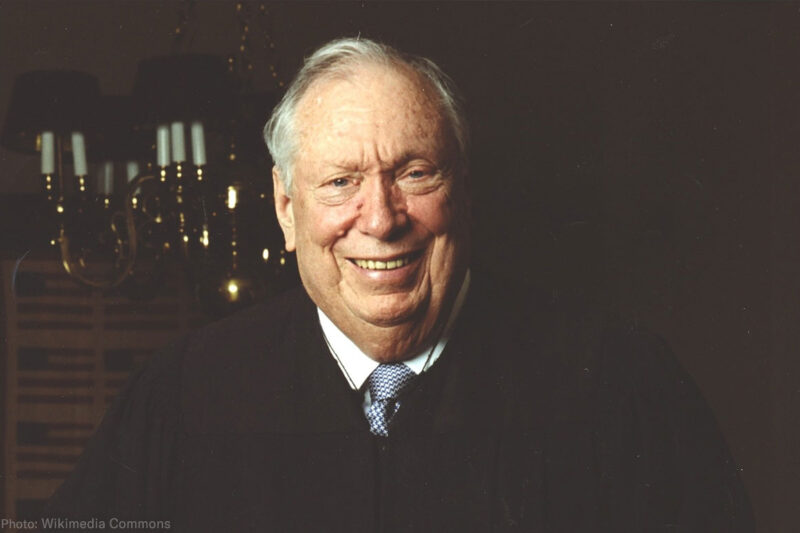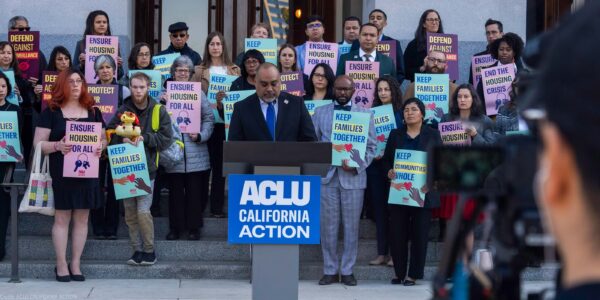
I first encountered Judge Stephen Reinhardt as a second-year law student at New York University, when he delivered the annual “Madison Lecture” on campus in 1998. I had heard of Judge Reinhardt and knew that he was an important liberal voice in an increasingly conservative federal judiciary — the “Chief Justice of the Warren court in exile,” as his former clerk Michael Dorf had described him. But I wasn’t at all prepared for the bluntness of his critique of current trends in jurisprudence. The Rehnquist Supreme Court, he said, would be remembered for having erected “arcane and almost impenetrable procedural rules” that elevated process over substantive rights, “especially those of racial minorities.” He continued: “One can only contemplate with dread the answer the current Court would have given had it been asked to overrule Plessy v. Ferguson.”
I wanted to work for a judge like that — one who pulled no punches when publicly castigating his putative superiors. (I would learn soon enough, when I became one of his law clerks, that Judge Reinhardt pulled no punches when talking to anyone, and that thick skin could be a valuable attribute in his chambers.) My ACLU colleague Hector Villagra recounts his own path to a Reinhardt clerkship. “I wanted to work for the judge who wrote Gutierrez” — a case in which Judge Reinhardt struck down an “English-only” workplace rule in a Los Angeles municipal court. No doubt many of the 150 law clerks who worked for Judge Reinhardt during his four decades on the bench can describe a similar inspiration. We certainly didn’t take the job for the hours!
Judge Reinhardt was one of the hardest working judges on the federal bench, and he expected his clerks to work equally hard. That work included not only a heavy load of bench memos and draft opinions but also a nonstop blizzard of email correspondence with the other judges of the Ninth Circuit. Because the judge lived 87 years without once touching a keyboard, there was a never-ending stream of law clerks going in and out of his chambers, dropping off fresh drafts and leaving with bruised egos and marked-up manuscripts.
While we sometimes joked that clerking for Judge Reinhardt was the price one paid for the lifelong privilege of being his former clerk, the truth is that we were all in awe of his brilliance, his drive, and his commitment to using the law to protect the powerless. He is best known for his opinions (and dissents) in landmark cases involving marriage equality, reproductive freedom, the separation of church and state, and the right to determine the time and manner of one’s own death. But Judge Reinhardt treated every case in which an individual was at the mercy of coercive state power as a landmark case.
The federal courts hear thousands of appeals each year from immigrants facing deportation, prisoners challenging their convictions, and civil rights litigants whose complaints have been cursorily dismissed, and the sheer volume of judicial caseloads means that not every appeal gets searching scrutiny. In Judge Reinhardt’s chambers, they all did. And in an era in which the Supreme Court had erected so many procedural barriers to the consideration of constitutional claims, finding the narrow pathways to relief for litigants whose rights had been violated required both diligence and ingenuity. Judge Reinhardt taught us that to succeed, we had to outwork and outsmart the proponents of injustice and intolerance.
Death penalty cases, in particular, showed Judge Reinhardt at his finest. He made no secret of his personal abhorrence about being part of a system that extinguished human life. Any time an execution was scheduled in any of the states of the Ninth Circuit, the judge and his clerks would stay in chambers until the final moments in case there was a last-minute appeal. He invariably dissented, sometimes alone, when the court failed to halt an execution. While he acknowledged being bound by Supreme Court precedents upholding the constitutionality of the death penalty, he once told me that he had “yet to see a death penalty case without reversible error.” I regret that he didn’t live to see that barbaric punishment abolished once and for all.
It’s particularly galling that we’ve lost Judge Reinhardt at precisely the time in our nation’s history when we need him most. (And it’s fitting that his children have instructed mourners that in lieu of flowers they should send contributions to the ACLU, where so many of his former clerks have worked, as well as his beloved wife Ramona Ripston, who served as the executive director of the ACLU of Southern California for almost 40 years.) The Trump presidency is the kind of democratic stress test that demands an active and principled judiciary. Judge Reinhardt was no Pollyanna — he would be the very last person to offer bland reassurances about how everything will work out in the end. But he was no pessimist, either. He genuinely believed that a more just and more humane world was achievable, and that our work, even in the face of calamitous setbacks, remained vitally important. I’ll close where I began, by quoting at length from the Madison lecture which Judge Reinhardt delivered almost 20 years ago. I can’t think of a better tribute to him or a more pressing message for us.
Although we are not in a period in which we can expect . . . immediate positive changes, it is nevertheless the duty of the academy and the legal profession to make the record that will be necessary when the pendulum swings. And the pendulum will surely swing — not only with respect to our death penalty jurisprudence, and the harsh and inflexible means by which we today limit the historic writ of habeas corpus, but also with respect to the inimical manner in which the majority of today's judges view individual rights. Those of us who still believe in the obligation of the courts to ensure fairness and equality for all, who share the concerns that dominated the brightly shining jurisprudence of the Warren-Brennan era, who believe that we are now in a valley in our long legal journey towards justice, may not be around to see the day when our judicial system returns to its state of glory. Obviously, this is not one of the proudest times in our nation's history — for any of our branches of government. It will take time to recover, to undo the damage, to heal the constitutional wounds. In the case of the Supreme Court, given the nature of the appointive process and the practical realities of lifetime tenure, the period required for fundamental change is a lengthy one.
Change will not come easily. It will take hard work on the part of well-trained advocates and creative legal thinkers who refuse to accept the notion that the era of judicial progress is forever over and who will inspire those who learn from their words and deeds. . . .
If we have faith in the nature of humanity, if we believe that the course of evolution is progress, if we are truly committed to the principles of liberty, equality, and justice, I am confident that we can return to an era in which the courts serve as the guardians of the values embodied in our Constitution, to an era in which judicial protection of the rights of the poor and the disadvantaged will once again be the order of the day. If we have the will and the determination, we will ultimately prevail.
Stay informed
Sign up to be the first to hear about how to take action.
By completing this form, I agree to receive occasional emails per the terms of the ACLU's privacy statement.
By completing this form, I agree to receive occasional emails per the terms of the ACLU's privacy statement.



